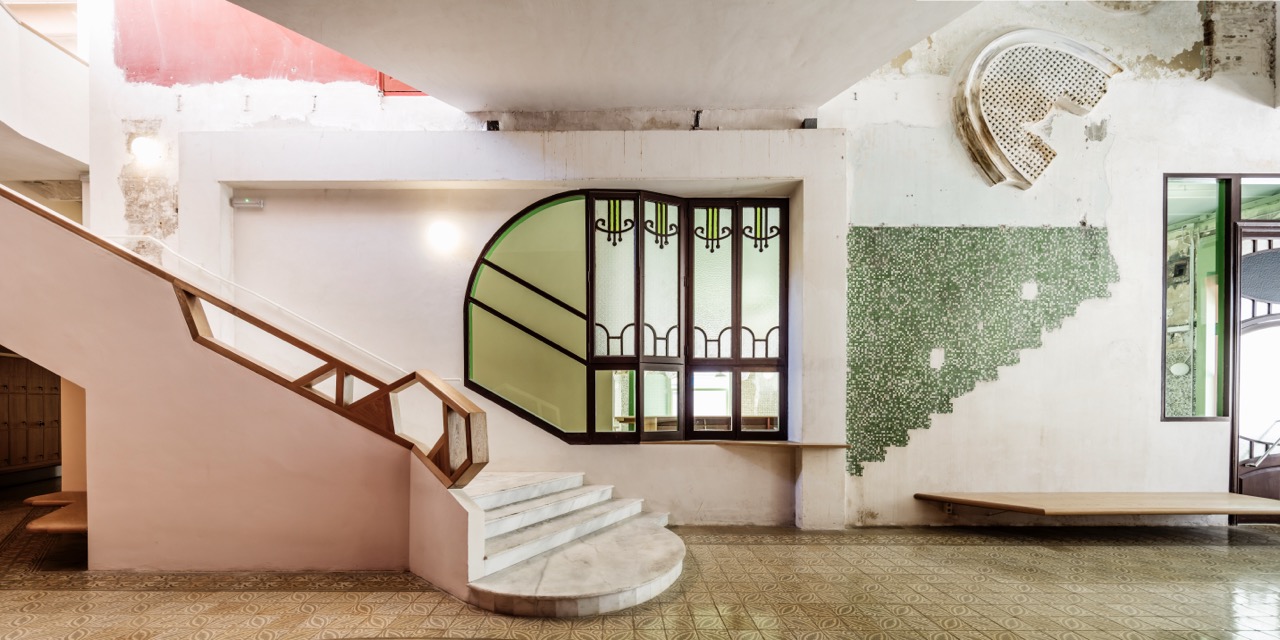Case Study
Sala Beckett

Details:
Design and building supervision: Flores & Prats Architects / Ricardo Flores and Eva Prats
Competition: January 2011
Construction: September 2014 – May 2017
Program: Rehabilitation of the former workers Cooperative Paz y Justicia in Poblenou Barcelona, as the new Sala Beckett / International Drama Centre, including two exhibition spaces, classrooms for reading and writing drama texts, offices, changing rooms for actors, and a bar-restaurant open to the neighbourhood.
Theatre and Stage Adviser: Engineer Marc Comas
Acoustic Adviser: Arau Acústica
Structure Adviser: Architect Manuel Arguijo
Installations: AJ Ingeniería
Collaborators: Eirene Presmanes, Jorge Casajús, Micol Bergamo, Michelle Capatori, Emanuele Lisci, Cecilia Obiol, Francesca Tassi-Carboni, Nicola Dale, Adrianna Mas, Giovanna de Caneva, Michael Stroh, Maria Elorriaga, Pau Sarquella, Rosella Notari, Laura Bendixen, Francesca Baldessari, Marta Smektala, Ioanna Torcanu, Carlotta Bonura, Florencia Sciutto, Georgina Surià, Elisabet Fàbrega, Julián González, Valentina Tridello, Agustina Álvaro Grand, Monika Palosz, Shreya Dudhat, Jordi Papaseit, Judith Casas, Tomás Kenny, Filippo Abrami, Constance Lieurade, Iben Jorgensen, Lucía Gutiérrez, Gimena Álvarez, Agustina Bersier, Mariela Allievi, Toni Cladera, Clàudia Calvet, Iván Alcázar, Nina Andreatta, Jonny Pugh
Project:
[This text is adapted from an article by Josep Maria Garcia-Fuentes, originally published in El Temps. The full article is available via the link in the description]
Flores & Prats approached the transformation of the former Pau i Justícia Cooperative into the new Sala Beckett theatre through a meticulous and detailed study of the existing building. They systematically documented its architectural elements—doors, windows, tiles, mouldings, glass panes, and various other components and materials with potential for reuse. Rather than pursuing an idealized—and inevitably contentious—restoration of the structure, their aim was to creatively reinterpret its fabric, merging the pre-existing architecture with the new intervention into a coherent and unified whole.
In contrast to conventional heritage preservation approaches, which typically demand a clear and explicit distinction between what is old and what is new, the New Sala Beckett exemplifies a subtle and refined integration of both. Existing walls, marked by the traces and scars of their construction, blend seamlessly with newly added elements, often without visible boundaries. Former windows are reconfigured as doors, while old doors become contemporary windows. Historic floor patterns delineate new spatial arrangements. In this way, the project preserves the layered memory embedded in the building’s components—including its most recent phase of decay—while simultaneously enabling its architectural rebirth.
This interweaving of past narratives with present and future aspirations creates a dynamic spatial resonance. All architectural and constructional elements—whether inherited or introduced—coexist and interact in synchrony. The building becomes a living archive of history and daily life, activated through its use by visitors and the local community. The new architecture is, in this sense, an act of preservation in itself.
Paradoxically, the absence of formal heritage protection—often associated with restrictive and arbitrary constraints—enabled Flores & Prats to engage with the building’s remains freely and inventively. Their intervention stands as a thoughtful and precise reinterpretation of the original structure, designed to ensure its continuity into the future. The resulting architecture appears to have always belonged to the Poblenou district, even though it emerges from a radically contemporary design approach rather than a traditional preservation framework.
At Sala Beckett, the boundaries between pre-existing elements and new additions are intentionally blurred. The architects significantly elevate the value of the inherited fabric by embracing the inherent complexities and contradictions of conservation: to preserve is also, in part, to transform. Their approach aligns with the work of Enric Miralles and Josep Maria Jujol—explicit influences on their practice—as well as that of Antoni Gaudí, John Soane, and Frank Gehry, among others. Ultimately, their work asserts a profound idea: that to preserve is, above all, to make architecture.
--
image rights © Adrià Goula